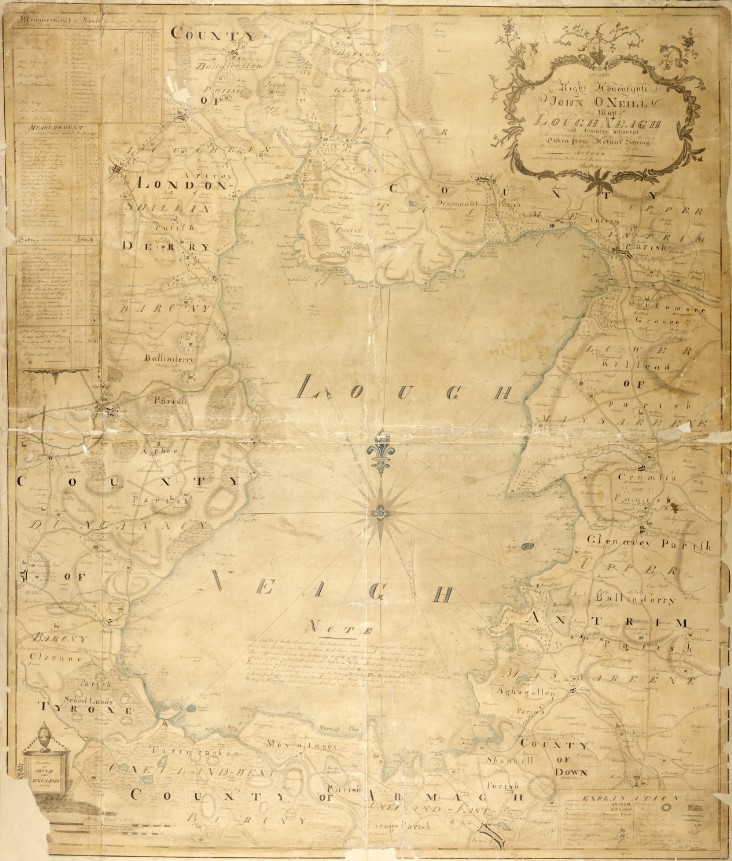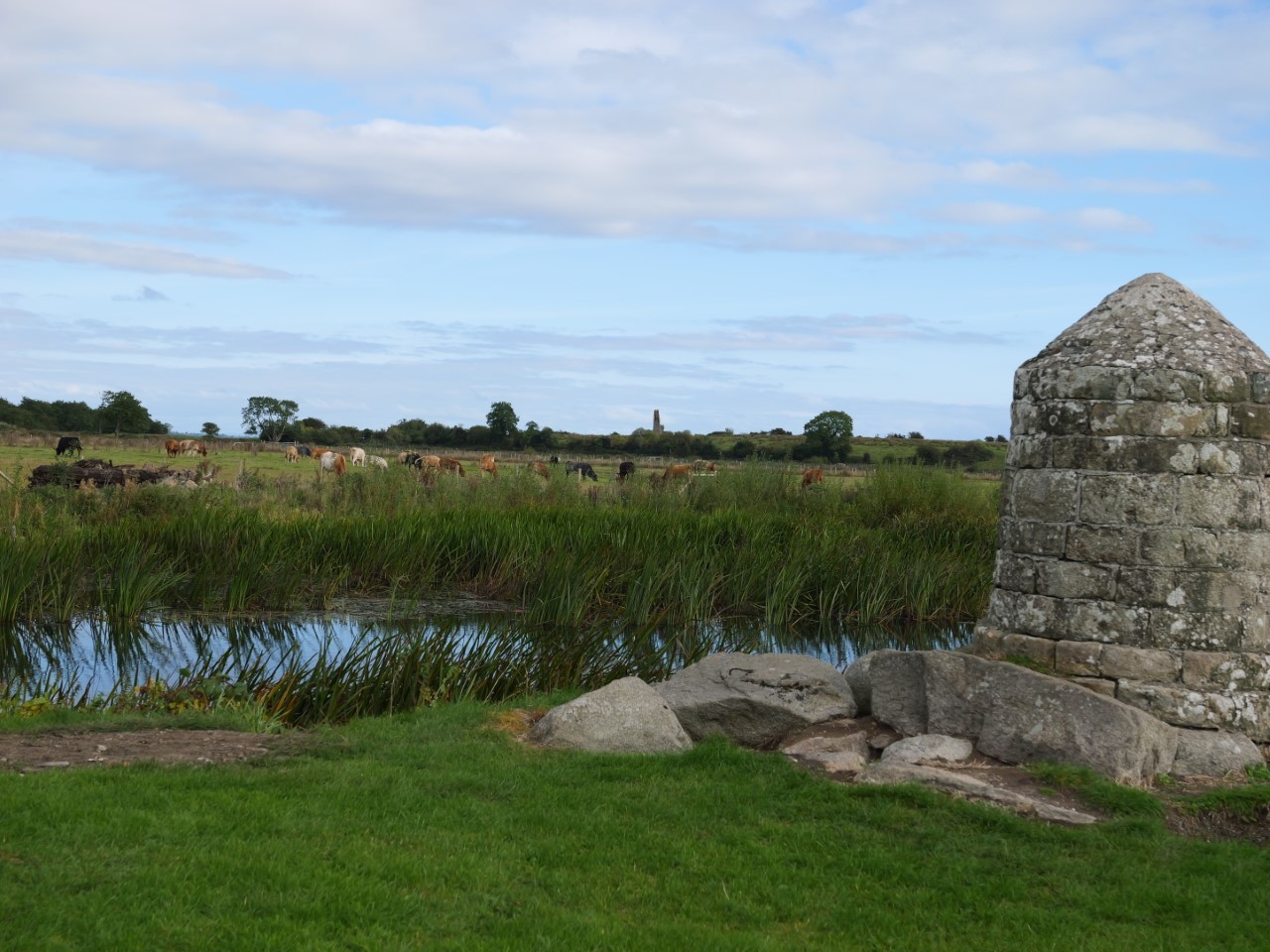“You can’t tell the cultural history or the mythology of Ireland without factoring in Lough Neagh.”
For activist and former People Before Profit MLA Eamonn McCann, the lough is central to Ireland.
According to Irish mythology, Lough Neagh - the largest freshwater body in the UK and Ireland - was created when the giant Finn McCool scooped up a clod of soil. That clod was thrown into the Irish Sea and became the Isle of Man.
The lough and its myths have been an inspiration for writers including Nobel laureate Seamus Heaney and AE Russell.
Mr McCann told The Detail the lough - which was home to a Viking fleet in 839 AD - has shaped Irish cultural history.
“It goes way back into the mythology, the imagination and the history of Ireland,” he said.
“Its worth is still magical in the year 2022 as well as way back when people actually believed or psyched themselves into believing the stories, not just of Finn McCool, but of the various great figures of Irish mythology.
“You can’t tell the cultural history or the mythology of Ireland without factoring in Lough Neagh.
“If we lose Lough Neagh, we will have left a hole in the communal memory of the people of Ireland.”
Jim Conway, the president of a Lurgan-based appreciation society dedicated to the polymath and mystic, AE Russell, said the lough is a rich source of myth.
“Lough Neagh and its shores are a fundamental part of our ancient mythology,” he said.
“The great palace of the Tuatha Dé Danann is located beneath her waters - the abode of gods and supernatural beings - and is recalled in music, poetry and song.”
More recently, the lough and its hinterland inspired one of Ireland’s most-celebrated poets, Seamus Heaney.
Heaney grew up in the Co Derry village of Bellaghy - within a couple of miles of the lough.
The lake and its surrounding wetlands inspired many of Heaney's works, including ‘A Lough Neagh Sequence’ - seven poems dedicated to the area's fishermen.
A key habitat
The lough and wetlands are recognised as one of Europe’s most important habitats.
The lake supports rare plants; invertebrates; more than 20,000 waterfowl in winter, and a significant population of freshwater pollan - one of the most important fish species in Ireland.
Lough Neagh also holds internationally-recognised environmental protections, including as an Area of Special Scientific Interest and Special Conservation Area.
For decades, the lough has supplied nearly half of Northern Ireland’s drinking water.
The water is publicly-owned, with several different government departments and agencies involved.
The bed and banks of the lough are owned by the Earl of Shaftesbury - an English aristocrat based in Dorset.
Parts of the foreshore are owned by individuals and organisations, including some councils, who have purchased plots of land from the Shaftesbury Estate in recent years.
Shaftesbury Estate and Lough Neagh
Lough Neagh has been subject to a series of disputes over several centuries.
A territorial claim to the lough was initially made in the early 1600s by Sir Arthur Chichester, a leading figure in the Plantation of Ulster.
By the 18th century, the lough was the focus of rows over fishing rights.
Ownership of the lough bed and soil, along with exclusive rights to hunting and fishing activities, passed to the Earl of Shaftesbury during the 19th century.
In 1911, the Shaftesbury Estate’s ownership was challenged in a landmark House of Lords appeal case over fishing rights.
The Estate had brought an injunction against Lough Neagh fishermen, preventing them from fishing eels at the water body.
The fishermen were represented by lawyer and Irish nationalist MP, Tim Healy, who argued the claim to ownership was not legitimate.
The House of Lords eventually decided by a single vote that the British Crown had granted Lough Neagh legally. The ruling also upheld the fishing ban.
Bróna McNeill, a legal researcher at Queen’s University Belfast, said the lough has been “mired in controversy for generations”.
“A large body of litigation concerning the existence and nature of fishing rights in the lough – and the implications of this - has accumulated since at least the 18th century,” she said.
“These disagreements have ranged from private convictions for fishing at certain locations on the lough and allegations of trespass, to more fundamental questions about the validity of the asserted legal title to the fishing rights (and, by extension, to the bed and soil) of this expansive asset.
“These underlying issues continue to colour more recent disputes about the correct use, management and ownership of the lough, and there has been persistent debate about how public and private interests should be balanced in this context.”

A map of Lough Neagh from 1785. © James Lendrick, reference D604/1, image courtesy the Deputy Keeper of the Records, the Public Record Office of Northern Ireland
Fishing disputes
In the 1950s, a Dutch firm, combined with several eel wholesalers in London, acquired the company operating eel weirs at the lough.
Between 1962 and 1963, Lough Neagh fishermen contested the Dutch consortium’s ownership of the fishing rights in a nine-week High Court action that was at the time the longest civil case in Northern Ireland’s history.
Their campaign was backed by civil rights organisations who met fishermen and staged demonstrations.
Michael Farrell, a former leader of the People’s Democracy group, campaigned for the fishermen and occupied the Dutch company’s offices for a time.
“It was a classic case of people whose families had fished there for generations and a company based in London and Amsterdam telling them they couldn’t - or that they could only fish in a limited way,” he said.
“So naturally there was a lot of aggro about this.”
The fishermen eventually lost the civil case.
But, during the legal wrangling, they set up the Lough Neagh Fishermen's Association.
Initially registered as a trade union, the organisation became a co-operative society that gradually bought out shareholders in the fishing company until it acquired the majority stake in 1971.
This led to the establishment of the Lough Neagh Fishermen’s Co-Operative Society that now runs the largest wild eel fishery in western Europe.
Lough Neagh sand
For centuries, the lough’s main businesses revolved around fishing.
But, over the 20th century, demand increased for sand extracted from the lough.
Thousands of tonnes of sand were dredged from the lough bed every year for use in building projects, including the construction of Parliament Buildings in Belfast - the seat of Northern Ireland’s government - which opened in 1932.
In the early 2000s, more than a million tonnes were being dredged each year. The practice was not regulated until 2021, with firms now licenced to extract a maximum of 1.5 million tonnes annually.
According to industry estimates, Lough Neagh has supplied around 30% of Northern Ireland’s construction sand in recent years.
For decades, firms have paid a royalty fee to the Earl of Shaftesbury for each tonne of sand extracted.
According to government papers held at the Public Record Office of Northern Ireland (PRONI), most of the Shaftesbury Estate's income from Lough Neagh in the early 1970s came from sand royalties.
The Estate earned £4,194 through royalties from sand extraction in 1971, while its annual income from Lough Neagh was £6,880.
The current owner of the bed and banks of Lough Neagh is the 12th Earl of Shaftesbury, Nicholas Ashley-Cooper.
In 2016, Vanity Fair magazine reported that the Earl was renovating his ancestral home, St Giles House, in East Dorset. That renovation was financed by bank loans and the Earl’s inheritance, including Lough Neagh, the magazine reported.
The Earl continues to receive sand levy payments, although an up-to-date figure for the royalties is not publicly known.
In the late 1960s and early 1970s, the Shaftesbury Estate attempted to claim ownership of the water at Lough Neagh.
During this time, the Estate also charged the Belfast Water Commissioners, a body tasked with improving the city’s water supply, for extracting water at the lough.
However, in 1974, two Stormont ministers indicated that the Northern Ireland government did not accept the Estate’s water claim.
The then-ministers for Agriculture and the Environment told a government meeting that the Shaftesbury Estate “also claim(s) ownership of the water of Lough Neagh but this has never been accepted by government"
The lough and public ownership
Over the last 50 years, at least two separate attempts have been made to bring the whole lough into government control.
But these efforts - first between 1971 and 1976, and again in 2012 - have been unsuccessful.
Government records show that the first attempt failed because the Shaftesbury Estate’s representatives demanded £439,000 for the lough’s sale, later reduced to £300,000.
The Northern Ireland Government at the time was only prepared to pay £50,000.
Correspondence between Stormont officials in 1975 described the Estate’s ownership of the bed and banks of the lough as an “anachronism”.
In a draft submission to Northern Ireland Office minister, Jack Donaldson, officials wrote: “Lough Neagh…is one of Northern Ireland’s few natural resources.
“Application of the principle of public ownership of natural resources would remove the anachronism of ancient rights exercised by private interests.”
In 1976, an official at the Department of Agriculture wrote: “I think it would be madness not to purchase the bed and soil of Lough Neagh at the first reasonable opportunity.
“This is a national asset of too much importance to too many people to leave in private hands."
In 2012, fresh attempts were made to bring the lough into government control.
The Shaftesbury Estate reportedly said it would sell its assets for £6 million.
However, a 2014 report produced by senior civil servants advised against buying the lough.
Sinn Féin Mid Ulster MP, Francie Molloy, told The Detail that civil servants had been unwilling to take on management of the lough.
“They were focusing it all around the control of the water,” he said.
“That wasn’t the issue I was interested in - which was control of the bed and soil of the lough.
“Because if any council around the lough want to develop the shoreline, they have to pay money to the Shaftesbury Estate to do that.
"Even if they’re driving a post into the ground to put a fence in, they still have to pay the Shaftesbury Estate to get the go-ahead to do it.”
The Shaftesbury Estate has been contacted for comment.
The Detail asked government departments whether they had any plans to bring Lough Neagh into public ownership.
A spokesman from the Department for Infrastructure said: “Any decision to bring Lough Neagh into public ownership would be a matter for consideration by the NI Executive.”
Northern Ireland has had no devolved government since March, amid an ongoing political row over a post-Brexit trade protocol which has effectively created a customs border between Northern Ireland and Britain.
- Tommy Greene, the journalist who wrote this article, is a Bertha Foundation fellow. His recent work has appeared in The Guardian, The Irish Times and the Bureau of Investigative Journalism
- All of the work which he will be completing as a Bertha Foundation fellow will be focused on environmental issues
- This is the fourth in a series of publications which Tommy will produce as part of the Bertha Challenge
- To find out more about the Bertha Foundation, please click here
 By
By



